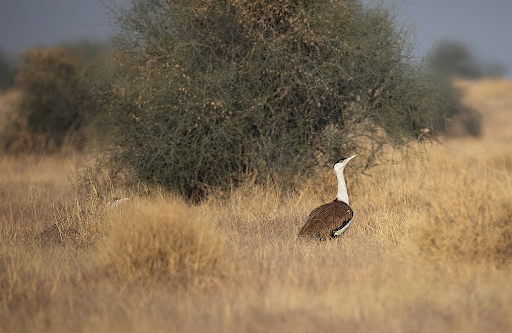




Source: INDIANEXPRESS
Disclaimer: Copyright infringement not intended.
India is home to over 70% of the world's wild tigers making their conservation a matter of national and global importance.
However certain well-meaning but misguided practices such as live baiting and over-intervention in tiger care have emerged as new challenges.
These practices though intended to help individual animals often go against the core principles of wildlife conservation and ecology.
Live baiting is the practice of offering a live prey animal typically buffalo calves, goats, or dogs to a predator like a tiger to lure or feed it.
Historical Context
Colonial era: British hunters used live bait to shoot tigers from elevated hides.
Post-independence: Live baiting continued for tourism purposes in places like Sariska till 1982, when it was stopped by PM Indira Gandhi.
Contemporary Practice
Now live baiting is used in conflict or health-related scenarios especially in reserves like Ranthambhore and Tadoba.
Tigers especially injured or geriatric ones are regularly fed live bait often without scientific justification.
Feeding wild tigers is not banned but not advisable.
Wild populations must be managed with minimum human intervention.
Interfering in the survival of the fittest violates ecological principles.
Artificial feeding risks habituation leading to conflict with humans and livestock.
Habituation to Humans
Tigers start associating humans and vehicles with food increasing risk of attacks.
Loss of Hunting Skills
Cubs raised on bait fail to learn survival skills.
Leads to early death in natural competition.
Rise in Human-Wildlife Conflict
Habituated tigers may attack humans or livestock.
Creates danger for both tourists and forest staff.
Violation of Natural Selection
Protecting injured/old tigers goes against survival of the fittest.
Artificially prolongs life of weak individuals.
Ecological Imbalance
Artificial survival boosts pocket populations increasing intra-species conflict and pressure on prey base.
Public Sentiment vs Ecological Science
Post-Sariska debacle (2005) and other tiger deaths emotional appeals on social media led to increased interventions.
Conservationists label this trend misplaced kindness.
Experts comment that a wild tiger doesn’t need pet care it needs a wild home.
Examples of Interventions
Frequent tranquilisation for minor injuries.
Water holes created during every dry season.
Shifting prey species to augment food artificially.
Prolonged medical care for deformities or injuries.
Reserves Practicing This:
Corbett (Uttarakhand)
Bandipur (Karnataka)
Kanha & Pench (Madhya Pradesh)
Pilibhit (Uttar Pradesh)
Result
Multiple sedations, poor recovery, artificial population management, increased conflict potential.
|
Conservation Ethic |
Emotional Response |
|
Let natural death occur |
Save every tiger |
|
Survival of the fittest |
Extend tiger lives at any cost |
|
Protect ecosystems |
Focus on individual animals |
|
Minimal intervention |
Emergency aid as default |
Strict Implementation of NTCA SOP.
Promote understanding of natural death and ecological balance.
Invest in non-invasive monitoring, awareness and quick response teams.
Let field biologists and ecologists guide interventions not public sentiment or tourism pressure.
Ensure prey base and water availability to reduce need for intervention.
Sources:
|
PRACTICE QUESTION Q. Feeding wild tigers as an act of compassion often undermines the principles of wildlife conservation. Critically examine the practice of live baiting in India's tiger reserves. Suggest a sustainable framework for managing injured or orphaned big cats in the wild. 250 words |






© 2026 iasgyan. All right reserved